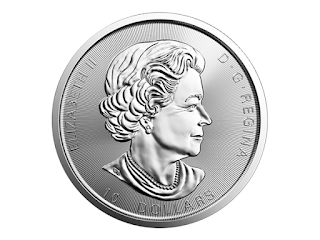If you currently hold an employer-managed 401(k) plan from an old job, you might want to think about the benefits of opening, or rolling over to, a precious metals IRA.
Holding funds in an old 401(k) plan might not be as lucrative as you think. While many appreciate the ease of a 401(k), it has become an increasingly popular and financially sound long-term strategy to either roll over or transfer those retirement assets to an IRA; particularly a precious metals IRA. With the value of the dollar on the decline, making the transition might be one of the smartest retirement decisions you can make.
While holding a precious metals IRA may not be the right choice for everyone, it is nonetheless important to consider the many benefits of holding a precious metals IRA. First, let’s discuss the difference between a 401(k) and a precious metals IRA.
401(k) Vs. Precious Metals IRA
A 401(k) account is either an employer-sponsored or sole proprietor retirement account that allows people to invest a portion of their salary prior to taxation. These accounts usually contain a combination of stocks and mutual funds.
A precious metals IRA (Individual Retirement Account) is a self-directed IRA that allows the holder to purchase and/or invest in a broad scope of products using the monetary value of physical metals owned by the account holder. In 2015, IRAs held approximately $50 billion in what are known as “alternative” or “unconventional” assets. These are classified as items that have significant monetary value, such as private equity, precious metals, and real estate, yet are more difficult to liquidate than paper assets, like stocks and bonds.
401(k) Contributions: If you are still with the employer that sponsors your 401(k), in 2017, the holder of a 401(k) account could contribute a maximum of $18,000 (including employer contributions) annually if the account holder is 49 years of age or younger. After the age of 50, the maximum annual contribution is $24,000.
For account holders over the age of 50 that are still with the employer sponsoring your 401(k), it is possible to make up for an under-the-maximum contribution with a “catch-up” contribution the following year of up to $5,500, which is not counted towards the standard maximum contribution. So, if your contribution one year is $20,000, the contribution the following year can be $26,000.
For 401(k)’s with a current job, an employer can match the account holder’s contribution up to 6 percent.
Precious Metals IRA Contributions: In 2017, the holder of a precious metals IRA could contribute a maximum of $5,500 annually if the account holder is 49 years of age or younger. After the age of 50, the maximum annual contribution is $6,500.
Account holders over the age of 50 who make contributions under the yearly limit can make a “catch up” contribution of up to $1,000.
There are numerous reasons why it could be beneficial to move your funds out of a 401(k) from an old employer and open a precious metals IRA.
Diversification Options
Typically, holding a 401(k) account limits your options when it comes to investments. Account holders looking to broaden their choices find that their 401(k) plans are quite conservative; the point is to mitigate risk with the goal of hitting a particular target over the course of several decades. Moreover, it is likely the account advisor – not the account holder – who oversees the choice of investments.
A precious metals IRA account, however, allows for greater control by the account holder in terms of asset classification. A precious metals IRA can hold gold, silver, platinum, and palladium; more broadly, because it falls under the umbrella of a Self-Directed IRA, it can also hold real estate, stocks, and privately-held companies.
However, some account holders – particularly those who are already close to retirement – might be concerned about increased risk. While there might be greater risk associated with the types of assets held in a precious metals IRA, the reward will be considerably greater than what could be achieved with a comparatively conservative 401(k) plan. Moreover, precious metals can act as a safe haven asset against poorly performing stocks.
Early Withdrawal
Both 401(k) accounts and IRAs allow for early distribution. During times of financial crisis, or personal or medical emergencies, you might require access to your retirement savings. While it is possible to borrow against your 401(k), if you make an actual early withdrawal, you would have to pay state and federal taxes as well as a 10 percent penalty (unless you are experiencing a hardship as outlined by the Internal Revenue Service).
A precious metals IRA, on the other hand, offers greater flexibility for the account holder. Although taxes will still apply, in some cases, you may take an early distribution of a portion of your retirement funds without being penalized (when you first buy a home, or for higher education expenses). However, you will have to pay state and federal taxes.
Easy accessibility isn’t without a downside, however. The difficulty in withdrawing from a 401(k) account can sometimes act as an incentive to leave it untouched. The ease of taking funds from an IRA, on the other hand, might cause some to use it frequently and inappropriately, significantly compromising the potential for growth in the long run.
Flexible Financial Solutions
An employer-sponsored 401(k) account is managed by an account advisor who is working with only a fraction of the investment options available to precious metals IRA holders. Precious metals IRAs offer a far more customizable suite of assets than 401(k) accounts.
Nevertheless, a precious metals IRA requires greater participation from the account holder than a 401(k). The 401(k) account is set up with a precise retirement goal in mind, which many holders find safer and more convenient.
What’s Right for You?
Some holders of a current employer-sponsored 401(k) might not be able to roll over into a precious metals IRA until after the age of 59 1/2. Additionally, if you’re participating in an employer-match contribution plan, you’ll likely want to keep taking advantage of the matching funds.
However, if you’re carrying a 401(k) plan from a previous employer, or if you’ve recently retired, it could be to your advantage to consider rolling over your 401(k) into a precious metals IRA. With the possibility of a more lucrative and flexible options with a precious metals IRA, you may find yourself at a significant economic advantage. Furthermore, holding physical precious metals might prove to be a wise move, considering the current lack of stability in the global economy, and the weakening U.S. dollar.
Ultimately, having a precious metals IRA – even in addition to a 401(k) plan – will increase your chances of long-term security while opening you up to the possibility of a significant return.
If you have any questions about rolling your 401(k) account into a precious metals IRA, please contact the team at Birch Gold Group for a thorough consultation.












